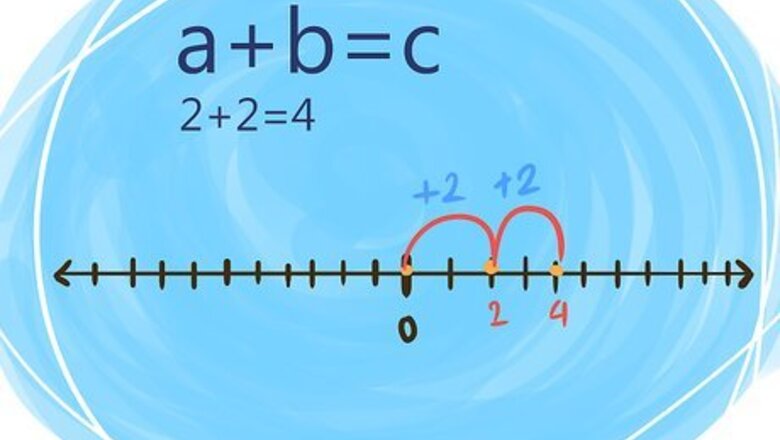
views
Using Addition and Subtraction Properties

Use the commutative property when both numbers are positive. The commutative property of addition states that changing the orders of the numbers doesn’t affect the sum of the equation. Do the addition as follows: a + b = c (where both a and b are positive numbers the sum c is also positive) For example: 2 + 2 = 4
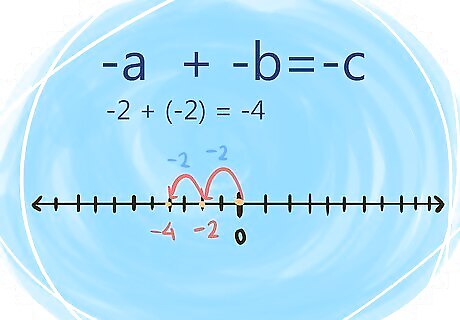
Use the commutative property if a and b are both negative. Do the addition as follows: -a + -b = -c (where both a and b are negative, you get the absolute value of the numbers then you proceed to add, and use the negative sign for the sum) For example: -2+ (-2)=-4

Use the commutative property when one number is positive and the other is negative. Do the addition as follows: a + (-b) = c (when your terms are of different signs, determine the larger number's value, then get the absolute value of both terms and subtract the lesser value from the larger value. Use the sign of the larger number for the answer.) For example: 5 + (-1) = 4
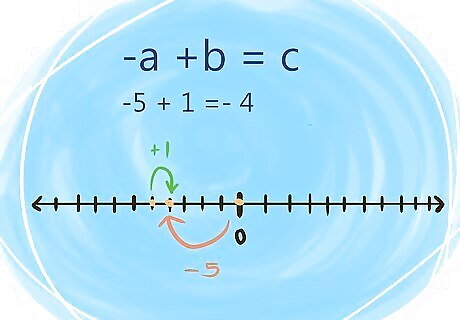
Use the commutative property when a is negative and b is positive. Do the addition as follows: -a +b = c (get the absolute value of the numbers and again, proceed to subtract the lesser value from the larger value and assume the sign of the larger value) For example: -5 + 2 = -3
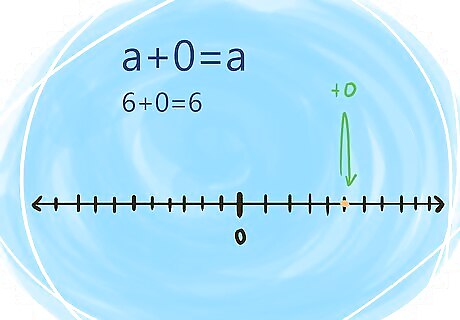
Understand the additive identity when adding a number to zero. The sum of any number when added to zero, is the number itself. An example of the additive identity is: a + 0 = a Mathematically, the additive identity looks like: 2 + 0 = 2 or 6 + 0 = 6

Know that adding the additive inverse is equal to zero. When adding the additive inverse of a number, the sum is equal to zero. The additive inverse is when a number is added to the negative equivalent of itself. For example: a + (-b) = 0, where b is equal to a Mathematically, the additive inverse looks like: 5 + -5 = 0
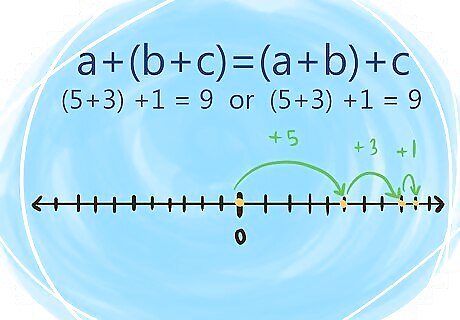
Realize that the associative property says that regrouping the addends (added numbers) doesn’t change the sum of the equation. The order in which you add numbers does not affect their sum. For example: (5+3) +1 = 9 has the same sum as 5+ (3+1) = 9
Using Multiplication Properties
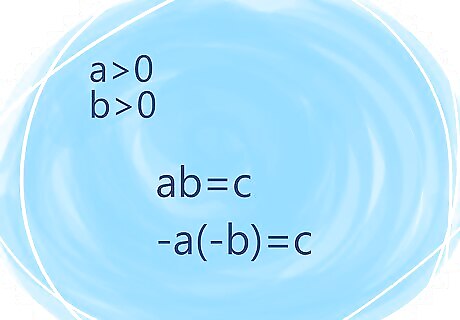
Realize that the associative property of multiplication means that the order in which you multiply does not affect the product of the equation. Multiplying a*b = c is also the same as b*a=c. However, the sign of the product can change depending on the signs of the original numbers: If both a and b have the same signs, the sign of the product is positive. For example:Solve Integers and Their Properties Step 8Bullet1.jpg When a and b are positive numbers and not equal to zero: +a * + b = +c When a and b are both negative numbers and not equal to zero: -a*-b = +c If a and b have unlike signs, the sign of the product is negative. For example: When a is positive and b is negative: +a * -b = -cSolve Integers and Their Properties Step 8Bullet2.jpg However, understand that any number multiplied by zero, equals zero.
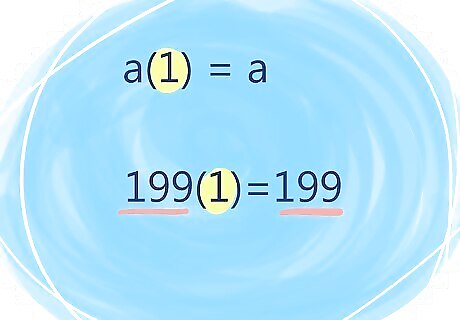
Understand that the multiplicative identity of an integer states that any integer multiplied by 1 is itself. Unless the integer is zero, any number multiplied by 1 is the number itself. For example: a*1 = aSolve Integers and Their Properties Step 9Bullet1.jpg Remember, any number multiplied by zero, equals zero.Solve Integers and Their Properties Step 9Bullet2.jpg
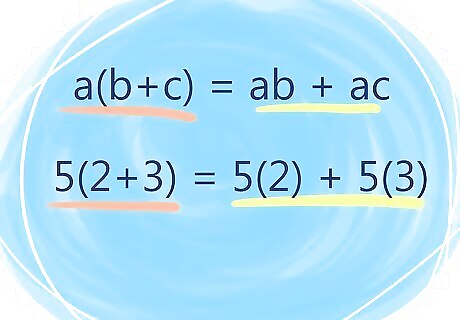
Recognize the distributive property of multiplication. The distributive property of multiplication says that any number "a" multiplied by the addends "b" and "c" in parenthesis, is the same as "a" multiplied by "c" plus "a" multiplied by "b". For example: a(b+c) = ab + ac Mathematically, this looks like: 5(2+3) = 5(2) + 5(3) Note that there is no inverse property for multiplication because the inverse of a whole number is a fraction, and fractions are not an element of integer. EXPERT TIP Joseph Meyer Joseph Meyer Math Teacher Joseph Meyer is a High School Math Teacher based in Pittsburgh, Pennsylvania. He is an educator at City Charter High School, where he has been teaching for over 7 years. Joseph is also the founder of Sandbox Math, an online learning community dedicated to helping students succeed in Algebra. His site is set apart by its focus on fostering genuine comprehension through step-by-step understanding (instead of just getting the correct final answer), enabling learners to identify and overcome misunderstandings and confidently take on any test they face. He received his MA in Physics from Case Western Reserve University and his BA in Physics from Baldwin Wallace University. Joseph Meyer Joseph Meyer Math Teacher The distributive property helps you avoid repetitive calculations. You can use the distributive property to solve equations where you must multiply a number by a sum or difference. It simplifies calculations, enables expression manipulation (like factoring), and forms the basis for solving many equations.












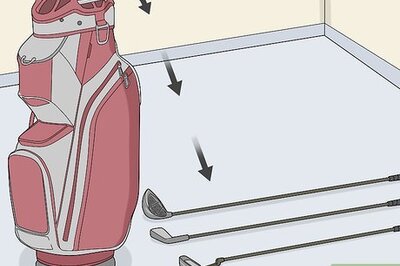







Comments
0 comment